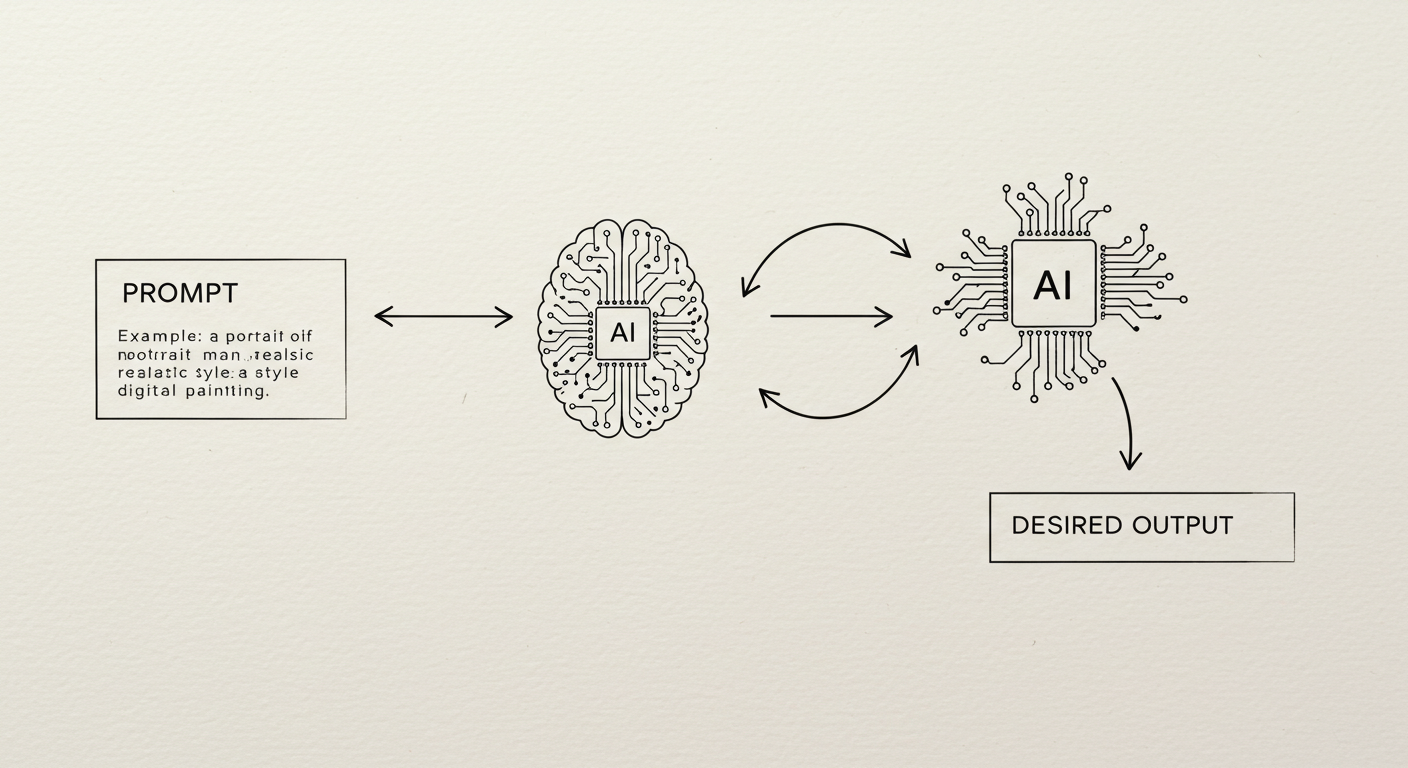
Unlocking AI's Inner Bard: My Adventures in Prompt Engineering for Creative Text
Unlocking AI’s Inner Bard: My Adventures in Prompt Engineering for Creative Text
If you’ve spent any time with Large Language Models (LLMs) like ChatGPT, Claude, or others, you know they can be incredible creative partners. They can spin tales, draft poetry, generate dialogue, and so much more. But you’ve probably also noticed that the quality and creativity of their output can vary wildly. The secret sauce? It often comes down to prompt engineering – the art and science of crafting the perfect instructions to guide the AI towards your desired outcome.
I’ve been on a fascinating journey, experimenting with different prompting techniques to coax more imaginative, nuanced, and genuinely creative text from these powerful models. It’s an iterative process, full of trial, error, and those delightful “aha!” moments. Today, I want to share some of the strategies that I’ve found most effective in my own explorations.
Why Bother with “Engineering” Prompts?
You might wonder, “Can’t I just ask the AI to ‘write a story’?” You can, and it will! But if you want a story with a specific tone, a unique character, a particular plot twist, or in a certain stylistic voice, you need to be more deliberate.
Think of the LLM as an incredibly talented but sometimes literal-minded improv actor. Your prompt sets the scene, defines the character, and gives the initial direction. The better your direction, the more compelling the performance. Good prompt engineering helps you:
- Increase Specificity: Get results closer to your vision.
- Enhance Creativity: Push the AI beyond generic responses.
- Control Tone and Style: Make the output match your desired aesthetic.
- Improve Coherence: Ensure the generated text flows logically.
- Reduce “AI-isms”: Minimize overly formal, repetitive, or bland language.
My Go-To Prompting Techniques for Creative Gold
Here are some of the techniques I regularly employ, often in combination:
1. Setting the Scene: Context is King
Before diving into the main request, provide a little context.
- Role-Playing: “You are a seasoned space explorer recounting your most dangerous mission.” or “You are a mischievous cat describing your day from your perspective.” This helps the AI adopt a persona.
- Audience Awareness: “Explain this complex scientific concept to a curious 10-year-old.” or “Write a marketing pitch for a luxury product aimed at discerning professionals.”
- Goal Definition: “The goal is to write a thrilling opening chapter that will hook the reader.”
Example: Instead of: “Write a poem about a tree.” Try: “You are an ancient, wise oak tree observing the changing seasons. Write a melancholic, free-verse poem reflecting on the passage of time and the fleeting lives you witness.”
2. Specifying Format and Structure
Tell the AI how you want the text structured.
- Format: “Write a blog post,” “Compose a sonnet,” “Draft a screenplay scene,” “Generate a list of five ideas.”
- Length Constraints: “In about 200 words,” “A short paragraph,” “Exactly three stanzas.” (Be aware that AI is often approximate with length).
- Structural Elements: “Include a clear beginning, middle, and end.” “Use bullet points for the key features.” “The dialogue should be snappy and witty.”
3. The Power of “Show, Don’t Tell” (Even for AI)
Instead of just stating a desired quality, describe it or give examples.
- For Tone: Instead of “Write a funny story,” try “Write a story filled with witty banter, situational irony, and a surprising (but humorous) twist ending.”
- For Style: Instead of “Write in a poetic style,” try “Write using vivid imagery, metaphors, and alliteration. Focus on sensory details.”
4. Providing Examples (Few-Shot Prompting)
This is one of the most powerful techniques! Give the AI one or more examples of the kind of output you’re looking for before making your actual request.
Here's an example of the style I want:
"The wind whispered secrets through the skeletal branches, a mournful sigh against the bruised twilight sky."
Now, write a description of a haunted house in a similar gothic, atmospheric style:
The AI learns from the patterns in your examples.
 (Imagine a graphic: a prompt with an “Example:” section, an arrow pointing to an AI brain icon, then an arrow to “Desired Output.”)
(Imagine a graphic: a prompt with an “Example:” section, an arrow pointing to an AI brain icon, then an arrow to “Desired Output.”)
5. Iterative Refinement: The Conversational Approach
Your first prompt is rarely your last. Treat it as the start of a conversation.
- Ask for Revisions: “That’s good, but can you make it more suspenseful?” “Could you try that again, but from the perspective of the villain?”
- Request Alternatives: “Give me three different opening lines for this story.”
- Provide Feedback: “I liked the imagery you used, but the pacing was too slow. Can we speed it up in the next section?“
6. Using Constraints and Negative Constraints
Sometimes, telling the AI what not to do is as important as telling it what to do.
- Constraints: “The story must include a talking animal, a hidden treasure, and take place in the Victorian era.”
- Negative Constraints: “Do not use clichés.” “Avoid making the main character overly heroic.” “The story should not have a happy ending.”
7. Temperature and Other Parameters (If Your Tool Allows)
Some advanced LLM interfaces or APIs allow you to adjust parameters:
- Temperature: Controls randomness. Lower temperatures (e.g., 0.2-0.5) lead to more focused, deterministic output. Higher temperatures (e.g., 0.7-1.0+) encourage more creative, diverse, and sometimes unpredictable results. For creative writing, I often start around 0.7 or 0.8.
- Top-p / Top-k: Other ways to control the randomness and breadth of word choices.
Experimenting with these can significantly impact the creativity of the output.
A Recent Experiment: Crafting a Micro-Fantasy Tale
I wanted a very short fantasy story with a specific, slightly melancholic mood.
My Iterative Prompting Process (Conceptual):
- Initial Vague Prompt: “Write a short fantasy story.” (Result was generic and uninspired).
- Adding Context & Character: “You are a weary traveler. Write a short fantasy story about encountering an ancient, magical creature in a forgotten forest. The mood should be slightly melancholic.” (Better, but still a bit bland).
- Adding Sensory Details & Style Cue: “You are a weary traveler, your boots caked with the dust of a hundred forgotten roads. Describe your encounter with an ancient, luminous stag in a moonlit, forgotten forest. The style should be lyrical and reflective, focusing on the ephemeral nature of magic. The mood is melancholic but with a hint of wonder. Around 150 words.”
- Refining with an Example (Self-Correction): (Okay, I didn’t actually give it an example in this chat, but I thought about how I’d want it to sound). “Let’s try that again. Ensure the stag doesn’t speak, but communicates a sense of ancient wisdom and sorrow through its presence. Emphasize the silence of the forest.”
This iterative process, layering in details and clarifying intent, led to a much more satisfying snippet that captured the feeling I was aiming for.
The Art of the Prompt is an Evolving Skill
Prompt engineering for creative text is not a fixed set of rules but an evolving art form. What works brilliantly today might be superseded by new techniques or more capable AI models tomorrow. The key is to cultivate a mindset of curiosity, experimentation, and precise communication.
The more I practice, the more intuitive it becomes to “speak the AI’s language” and guide it towards generating text that resonates with my creative vision. It’s a fascinating dance between human intention and artificial imagination.
What are your favorite prompt engineering tricks for creative writing? Have you had any breakthroughs or particularly surprising results? Share your experiences and tips in the comments – I’m always eager to learn more ways to unlock AI’s creative potential!


